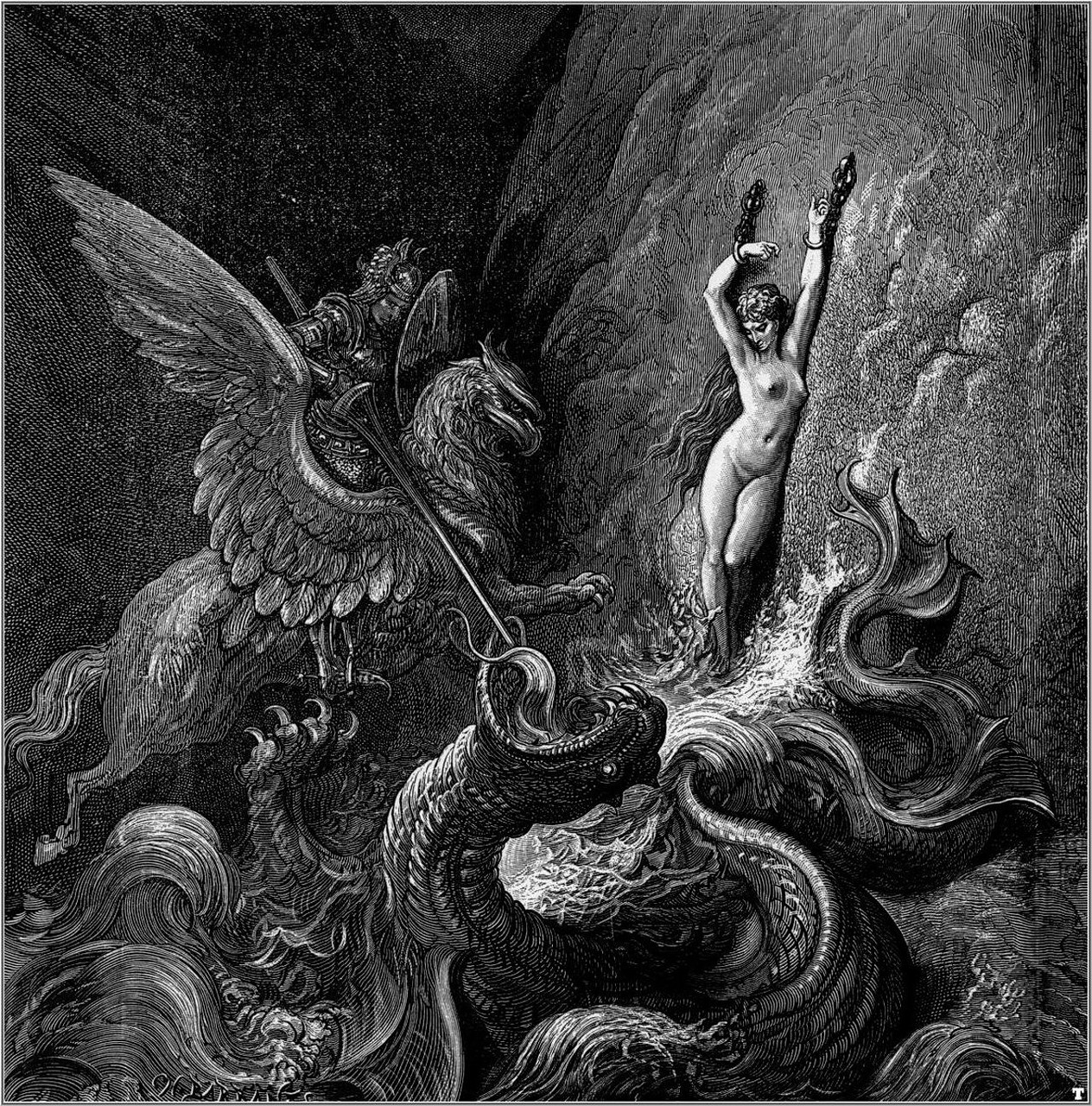Perseus, a celebrated figure in Greek mythology, is intricately linked to the tales of two significant women, where his heroism shines through contrasting actions—one leading to destruction, and the other to salvation. Despite both women being innocent, their outcomes are shaped by the context of their situations. Medusa’s tragic story embodies themes of abuse and punishment, culminating in her decapitation, while Andromeda faces a fate determined by her parents’ prideful claims that angered the gods, sacrificing their daughter to a ravenous sea monster.
Both tales exhibit striking parallels; in each, beauty emerges as a double-edged sword that leads to their downfall. The punishment for possessing such a coveted trait aligns them within the framework of objectification, resulting in the harsh reality of being prey to fate. Additionally, the narratives of Medusa and Andromeda have evolved over time. Medusa’s story gained resonance after her fall from grace, while Andromeda’s narrative has also shifted, revealing how her character supports the heroic portrayal of Perseus.
Andromeda was the offspring of Queen Cassiopeia and King Cepheus, whose hubris provoked the ire of the gods by claiming her beauty surpassed that of their finest. While they initially sought to destroy the entire royal lineage, they ultimately demanded Andromeda’s sacrifice. Bound to the rocky shores, she awaited her grim fate until Perseus intervened, captivated not only by her beauty but also by the prospect of claiming her as his bride in exchange for slaying the monster. As a beautiful princess from Ethiopia—translated to mean “burnt face” in Ancient Greek—her appearance was emblematic of her heritage, linking her to the Nubian Kingdom of Kush.
However, artistic representations throughout history have frequently misaligned with her true description. Instead of depicting her as dark-skinned, many Renaissance artists presented her as fair-skinned and Eurocentric. This portrayal raises critical questions about whether Andromeda would have been visualized differently had her descriptors not been majestic. The erasure of her ethnic identity presents an inquiry into societal prejudice and ignorance, casting a long shadow that remains apparent even in modern interpretations like those in Hollywood.
Exploring the etymology of “Ethiopia” reveals complexities beyond a mere geographic label; it was a term broadly applied by Greeks that referenced the features of people from the Kingdom of Kush and its neighboring regions. Ancient Nubia, known for its prosperous trading hubs, must have intrigued the Greeks familiar with tales of its various rulers. Consequently, these stories perhaps influenced the crafting of myth, intertwining them with elements of mystery.
Historical accounts by early writers, pre-dating the artwork that romanticized Andromeda, assert her identity as black. The 14th-century poet Petrarch noted her allure, describing Andromeda in glowing terms despite her dark skin, a sentiment echoed by Roman poet Ovid, who spoke of her native charm in relation to beauty in different hues. He even remarked on how her beauty could amplify her seductive allure.
Yet, the commonly perpetuated image of a white Andromeda is perplexing given the clarity surrounding her origins in ancient texts. Many interpretations suggested Ethiopia might denote anything from Indian to Phoenician ancestry, indicating a loss of specificity in racial identity. Nevertheless, the Renaissance artists, steeped in knowledge from ancient philosophers, chose to ignore these original concepts, instead opting for an interpretation aligned more closely with their own prevailing aesthetic and societal norms.
In questioning the motivations behind these representations, the cultural landscape of Europe from the early Renaissance to the Enlightenment reveals a complex backdrop. Amidst economic and social upheaval, the portrayal of Andromeda became enmeshed in the prevailing narratives that governed perceptions of beauty and race. With the transatlantic slave trade at play, a narrative endorsing a black and beautiful Andromeda would prove contentious, leading artists to erase or alter her ethnicity, rendering beauty incompatible with blackness in the societal consciousness of the time.
Ultimately, the preference for a white depiction of Andromeda over a narrative steeped in African roots underscores broader societal tendencies toward maintaining hierarchical structures. Such portrayals perpetuate a narrative conducive to the status quo, avoiding confrontations with uncomfortable historical truths regarding race and beauty dynamics. The juxtaposition of a white hero rescuing a captive black woman would unavoidably invoke tensions that would challenge existing paradigms.



